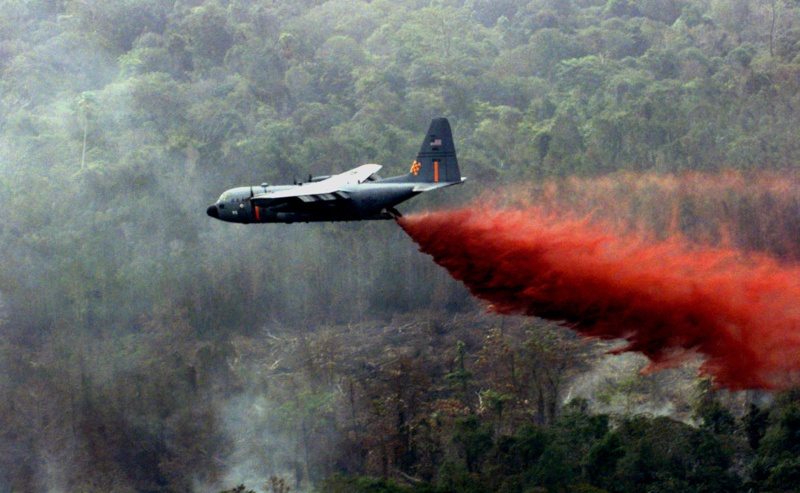As of April 25, the 302nd Air Expeditionary Group continues to battle the wildfires that are raging throughout areas of southern Texas.
The 302nd AEG, comprising Air National Guard and Air Force Reserve units, has assisted with fire fighting efforts throughout the week. The group currently has six C-130 Hercules aircraft equipped with Modular Airborne Fire Fighting Systems deployed to the area.
Due to weather conditions, the aircrews were not called upon to make drops April 24, yet they remained on duty in order to provide critical support upon tasking from the U.S. Forest Service.
“There was an increase in humidity yesterday, so the fire risks were lower, and it is ultimately up to the ground operations to call for air support resources,” said Terry Corning-Sevey, the MAFFS liaison officer. “They did not call yesterday, so we did not fly.”
To date, the 302nd AEG has accomplished 64 drops since their arrival April 17, dropping 90,000 gallons of retardant over Texas in effort to control the 993,000 acres of burning wildfires.
The 302nd AEG includes the 302nd Airlift Wing, from Colorado; the 146th Airlift Wing, from California; the 145th Airlift Wing, from North Carolina; and the 153rd Airlift Wing, from Wyoming.
The MAFFS is a self-contained aerial firefighting system that can discharge 3,000 gallons of water or fire retardant in less than five seconds, covering an area one-quarter of a mile long by 60 feet wide. Once the load is discharged, it can be refilled in less than 12 minutes.
The Department of Defense is flying at the request of the National Interagency Fire Center. U.S. Northern Command, through its Air Force Component Command, Air Forces Northern, deployed the 302nd AEG to serve as the lead DOD component supporting the National Interagency Fire Center.










